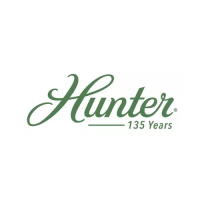Glossary
15.5
mls. (3 km.).
Rigging screw: a deck fitting with which the tensions of
standing rigging, e.g. stays, shrouds, etc. are adjusted.
Roach: the curved part of the leech of a sail that
extends beyond the direct line from head to clew.
Run: to run with the wind aft and with the sheets eased
well out.
Running rigging: all the moving lines, such as sheets
and halyards, used in the setting and trimming of sails.
S
Scope: the length of rope or cable paid out when mor
anchoring.
Scuppers: 1, holes in the toe rail that allow water to
drain off the deck; 2, drain cockpit through hull.
Seacock: a valve that shuts off an underwater inlet or
outlet passing through the hull.
Seize: to bind two ropes together, or a rope to a spar,
with a light line.
Serve: to cover and protect a splice or part of a rope
with twine bound tightly against the lay.
Serving mallet: tool with a grooved head, used when
serving a rope to keep the twine at a constant and high
tension.
Set: 1, to hoist a sail; 2, the way in which the sails fit; 3,
the direction of tidal current or steam.
Shackle: a metal link with a removable bolt across the
end; of various shapes: D, U.
Sheave: a grooved wheel in a block or spar for a rope
to run on.
Sheet: the rope attached to the clew of a sail or to the
boom, enabling it to be controlled or trimmed.
Shrouds: ropes or wires, usually in pairs, led from the
mast to the chain plates at deck level to prevent the
mast falling sideways; part of the standing rigging.
Sloop: a single-masted sailing boat with a mainsail and
one head sail.
Spar: a general term for any wooden or metal pole,
e.g., mast or boom, used to carry or give shape to sails.
Spindrift: spray blown along the surface of the sea.
Spinnaker: a large, light, balloon shaped sail set when
reaching or running.
Splice: to join ropes or wire by unlaying the strands and
interweaving them.
Split pin: see cotter pin.
Spreaders: horizontal struts attached to the mast, which
extends to the shrouds and help to support the mast.
Stall: a sail stalls when the airflow over it breaks up,
causing the boat to lose way.
Stanchion: upright metal post bolted to the deck to sup-
port guardrails or lifelines.
Standing part: the part of a line not used when making
a knot; the part of a rope that is made fast, or around
which the knot is tied.
Standing rigging: the shrouds and stays that are per-
manently set up and support the mast.
Starboard: right-hand side of a boat looking forward
(opp. of port).
Starboard tack: a boat is the starboard tack when the
wind strikes the starboard side first and the boom is out
to the port.
Stay: wire or rope which supports the mast in a fore and
aft direction; part of the standing rigging.
Steerage way: a boat has steerage way when it has
sufficient speed to allow it to be steered, or to answer
the helm.
Stem: the timer at the bow, from the keel upward, to
which the planking is attached.
Sternway: the backward, stern-first movement of a
boat.
Stringer: a fore and aft member, fitted to strengthen the
frames.
T
Tack: 1, the lower forward corner of a sail; 2, to turn the
boat through the wind so that it blows on the opposite
sides of the sails.
Tacking: working to windward by sailing close-hauled
on alternate courses so that the wind is first on one side
of the boat, then on the other.
Tack pennant: a length of wire with an eye in each end,
used to raise the tack of a headsail some distance off
the deck.
Tackle: a purchase system comprising of rope and
blocks that is used to gain mechanical advantage.
Tang: a strong metal fitting by which standing rigging is
attached to the mast or other spar.
Tender of dinghy: a small boat used to ferry stores and
people to a yacht.
Terminal fitting: fitting at the end of a wire rope by
which a shroud or stay can be attached to the mast, a
tang or a rigging screw/ turnbuckle.
Tide: the vertical rise and fall of the oceans caused by
the gravitational attraction of the moon.
Toe rail: a low strip of metal or molding running around
the edge of the deck.
Topping lift: a line from the masthead to a spar, nor-
mally the boom, which is used to raise it.
Topsides: the part of a boat’s hull that is above the
waterline.
Track: 1, the course a boat has made good; 2, a fitting
on the mast or boom into which the slides on a sail fit;
3, a fitting along which a traveller runs, used to alter the
angle of the sheets.
Transit: two fixed objects are in transit when seen in
line; two transit give position fix.

